Posté par Denis Dubois, le 4 octobre 2015;
- Date de prise de fonction : 1er juillet 2016 - 30 juin 2017
- Date limite : 1er décembre 2015
- Date et lieu : 2016-2017, Providence, Brown University.
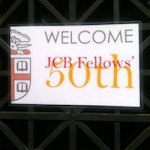 The John Carter Brown Library (JCB), an independently funded institution for advanced research on the campus of Brown University, will award approximately forty residential fellowships for the year July 1, 2016 to June 30, 2017. The Library contains one of the world’s premier collections of primary materials related to the discovery, exploration, and settlement of the New World to 1825, including books, maps, newspapers, and other printed objects. JCB Fellowships are open to scholars and writers working on all aspects of the Americas in the early modern period. The John Carter Brown Library (JCB), an independently funded institution for advanced research on the campus of Brown University, will award approximately forty residential fellowships for the year July 1, 2016 to June 30, 2017. The Library contains one of the world’s premier collections of primary materials related to the discovery, exploration, and settlement of the New World to 1825, including books, maps, newspapers, and other printed objects. JCB Fellowships are open to scholars and writers working on all aspects of the Americas in the early modern period.
Short-term Fellowships are for two to four months with a monthly stipend of $2,100. Open to US and foreign citizens who are engaged . . . → En lire plus
Posté par Denis Dubois, le 4 octobre 2015;
- Date et lieu du colloque : 23-25 novembre 2015, Lausanne, Université de Lausanne
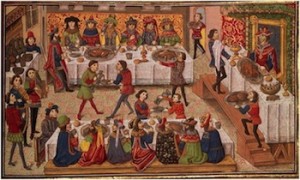 Durant les dernières décennies, l’intérêt croissant porté à l’alimentation médiévale et moderne a attiré l’attention sur ce phénomène particulier qu’est le banquet. On s’est surtout attaché à en souligner la dimension sociale, à travers l’analyse de la consommation ostentatoire ou de la sociabilité. On a peut-être oublié qu’il s’agissait aussi d’un phénomène culturel, où l’ingestion d’aliments et de vin s’accompagnait d’une intense communication gestuelle, verbale ou sonore (par la musique, entre autres). Durant les dernières décennies, l’intérêt croissant porté à l’alimentation médiévale et moderne a attiré l’attention sur ce phénomène particulier qu’est le banquet. On s’est surtout attaché à en souligner la dimension sociale, à travers l’analyse de la consommation ostentatoire ou de la sociabilité. On a peut-être oublié qu’il s’agissait aussi d’un phénomène culturel, où l’ingestion d’aliments et de vin s’accompagnait d’une intense communication gestuelle, verbale ou sonore (par la musique, entre autres).
L’objectif du colloque « Le Banquet : Manger, boire et parler ensemble (XIIe-XVIIe siècles) » est d’éclairer les différentes facettes du banquet, en croisant – selon la tradition bien établie des colloques Micrologus – les éclairages des historiens, . . . → En lire plus
Posté par Pascale Dubus, le 4 octobre 2015;
- Date limite : 23 novembre 2015
- Date de prise de fonction : 1er juillet 2016
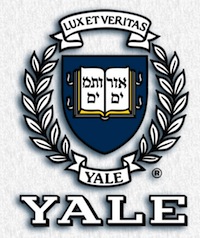 The Department of the History of Art of Yale University invites applications for a professor at any rank (Assistant, Associate or Full Professor) in the fields of Renaissance art, architecture, and/or visual/material culture. The Department of the History of Art of Yale University invites applications for a professor at any rank (Assistant, Associate or Full Professor) in the fields of Renaissance art, architecture, and/or visual/material culture.
We encourage applications from scholars specializing in either Northern or Southern Europe, or in Europe’s interaction with the rest of the world.
Applicants must have a Ph.D. in the History of Art and demonstrate a strong publication record and a commitment to teaching at the undergraduate and graduate levels. Start date for the position is July 1, 2016. Salary is commensurate with qualifications and experience.
Please submit a cover letter, CV, and writing sample, along with the names and . . . → En lire plus
Posté par Denis Dubois, le 2 octobre 2015;
- Date et lieu du colloque : 13-14 octobre 2015, Paris, Académie d'architecture
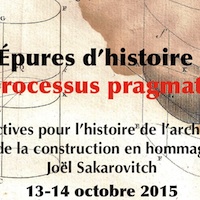 Épures d’histoire : un processus pragmatique. Perspectives pour l’histoire de l’architecture et de la construction en hommage à Joël Sakarovitch Épures d’histoire : un processus pragmatique. Perspectives pour l’histoire de l’architecture et de la construction en hommage à Joël Sakarovitch
Paris, Académie d’Achitecture 9 place des Vosges Paris IVe
13-14 octobre 2015
Colloque international avec le soutien de l’Académie de l’Architecture, du Labex Hastec, du Centre Alexandre Koyré, du Centre de Théorie et Analyse du Droit, du Centre Jean Pépin et du Laboratoire de médiévistique occidentale de Paris, du Max-Planck-Institut für Wissenschaftsgeschichte.
Le lundi 12 octobre, à 18h30, sera inaugurée à l’Académie d’Architecture une exposition dédiée aux sources qu’elle recèle. A cette occasion, un hommage sera rendu à Joël Sakarovitch.
Mardi 13 octobre 2015
9h Introduction A. Becchi, R. Carvais et . . . → En lire plus
Posté par Pascale Dubus, le 1 octobre 2015;
- Date limite : 30 octobre 2015
- Date : Janvier-mars 2016
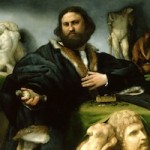 The aim of the call for applications is to create an international team formed of three scholars, either PhD candidates at the end of their research or postdoctoral fellows, to work together for three months to explore different notions of antiquarian culture and artistic patronage in different areas in Europe during the early modern period. Working on the assumption that a universal and monolithic Renaissance is increasingly seen to be a superseded concept, the research group will be encouraged to investigate the idea of « local Renaissances », as well as crucial historiographical concepts such as « antiquity », « identity » and « style . . . → En lire plus The aim of the call for applications is to create an international team formed of three scholars, either PhD candidates at the end of their research or postdoctoral fellows, to work together for three months to explore different notions of antiquarian culture and artistic patronage in different areas in Europe during the early modern period. Working on the assumption that a universal and monolithic Renaissance is increasingly seen to be a superseded concept, the research group will be encouraged to investigate the idea of « local Renaissances », as well as crucial historiographical concepts such as « antiquity », « identity » and « style . . . → En lire plus
Posté par Pascale Dubus, le 29 septembre 2015;
- Date limite : Communications : 15 Décembre 2015, Sessions : 1er novembre 2015
- Date et lieu du colloque : 24-26 mars 2016, St. Louis (Missouri), Parkway Hôtel
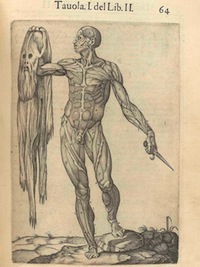 Nous vous souhaitons la bienvenue à la 65e réunion du colloque international de la Renaissance du Sud, Explorer la Renaissance, du 24 au 26 mars 2016 à St. Louis, Missouri, au Parkway Hôtel. Nous vous souhaitons la bienvenue à la 65e réunion du colloque international de la Renaissance du Sud, Explorer la Renaissance, du 24 au 26 mars 2016 à St. Louis, Missouri, au Parkway Hôtel.
Des communications (15-20 minutes) sont sollicitées sur tous les aspects des études de la Renaissance (histoire, histoire de l’art, littérature, musique, philosophie, science, théologie). Les résumés (400-500 mots, et un 100 mots court pour le résumé inclus dans le programme) doivent être soumis par courriel au plus tard le 15 Décembre 2015 au président du programme Christopher Baker (Christopher.Baker@armstrong.edu).
Les sujets possibles concernent :
L’intersection entre art et science à . . . → En lire plus
Posté par Pascale Dubus, le 29 septembre 2015;
- Date et lieu du colloque : 26-27 mai 2016, Florence, Archivio di Stato
- Date limite : 1er janvier 2016
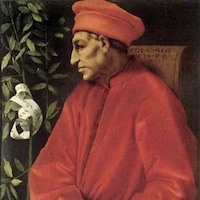 As patrons of art, the Medici left a legacy that is unrivalled. Their well-known narrative lies at the center of Renaissance scholarship. The Medici patronized painters and sculptors, founded academies, preserved and curated their collections, and used both artists and artworks as political tools to convey their agendas and augment their prestige amongst the courts of Italy and Europe. Yet, just as Medici identity was expressed in terms of this cultural patrimony, so too were the attacks of their enemies. A rich corpus of anti-Medicean works of art remains underappreciated and understudied: works of art that . . . → En lire plus As patrons of art, the Medici left a legacy that is unrivalled. Their well-known narrative lies at the center of Renaissance scholarship. The Medici patronized painters and sculptors, founded academies, preserved and curated their collections, and used both artists and artworks as political tools to convey their agendas and augment their prestige amongst the courts of Italy and Europe. Yet, just as Medici identity was expressed in terms of this cultural patrimony, so too were the attacks of their enemies. A rich corpus of anti-Medicean works of art remains underappreciated and understudied: works of art that . . . → En lire plus
Posté par MAEL TAUZIEDE-ESPARIAT, le 29 septembre 2015;
- Date et lieu de la conférence : 6 octobre 2015, Paris, INHA

Fragonard, Le baiser volé, 1786, huile sur toile, 168,5 cm × 168,5 cm, Madrid: musée du Prado
L’utilisation d’un répertoire hollandais équivoque par les peintres de genre des années 1780, Marguerite Gérard, Louis-Léopold Boilly, Michel Garnier en tête, n’était pas seulement une réponse au goût des amateurs pour les fijnschilders. Ces références permettaient au public de lire ces compositions selon différents niveaux d’interprétation. Les artistes maintenaient ainsi l’ambiguïté sur le lieu et sur l’époque de leurs sujets, comme se plaisaient à le faire aussi les . . . → En lire plus
Posté par Fabien.Lacouture, le 28 septembre 2015;
- Date et lieu des journées d'études : 26-27 Mai 2016, Paris, INHA
- Date limite : 1er décembre 2015
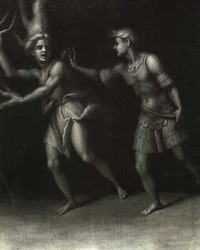 In nova fert animus mutatas dicere formas corpora. (« Inspiré par mon génie, je vais chanter les êtres et les corps qui ont été revêtus de formes nouvelles, et qui ont subi des changements divers ») Ovide, Métamorphoses, Livre I, I, 1-4 In nova fert animus mutatas dicere formas corpora. (« Inspiré par mon génie, je vais chanter les êtres et les corps qui ont été revêtus de formes nouvelles, et qui ont subi des changements divers ») Ovide, Métamorphoses, Livre I, I, 1-4
Les peintres de la Renaissance étaient de grands lecteurs d’Ovide, dont l’ouvrage majeur, Les Métamorphoses, détermina le sujet de nombreuses œuvres et reste ainsi, pour l’étude de l’art des XVe et XVIe siècles notamment, une source primordiale et un objet d’étude particulièrement fécond. La métamorphose, le passage d’un état à un autre, pose néanmoins un problème à celui qui souhaite s’atteler à . . . → En lire plus
Posté par AnneServais, le 27 septembre 2015;
- Date et lieu de la journée d'études : 10 octobre 2015, Paris, INHA
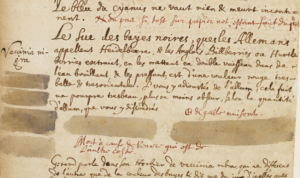 Le samedi 10 octobre 2015 se tiendra à l’Institut National d’Histoire de l’Art, Galerie Colbert, salle Jullian, 2 rue Vivienne, 75002 Paris, le colloque : Le samedi 10 octobre 2015 se tiendra à l’Institut National d’Histoire de l’Art, Galerie Colbert, salle Jullian, 2 rue Vivienne, 75002 Paris, le colloque :
Savoir et transmission : la littérature de la technologie de l’art dans l’Europe moderne (1400-1700)
organisé par le Centre de recherche en préservation des biens culturels (CRPBC), composante de l’Hicsa – Université Paris 1 Panthéon Sorbonne.
Cette journée sera consacrée à la littérature de la technologie de l’art en Europe entre le XVe siècle et le XVIIIe siècle, époque qui voit émerger une nouvelle approche de la connaissance. Sont parvenus jusqu’à nous un grand nombre . . . → En lire plus
Posté par Pascale Dubus, le 26 septembre 2015;
- Date d'arrivée : 1er juillet 2016
- Date limite : 15 octobre 2015, 14 décembre 2015
 Fifteen I Tatti Fellowships, each for twelve months, are available annually for post-doctoral research in any aspect of the Italian Renaissance broadly understood historically to include the period from the 14th to the 17th century, and geographically to include transnational dialogues between Italy and other cultures (e.g. Latin American, Mediterranean, African, Asian etc.). Fifteen I Tatti Fellowships, each for twelve months, are available annually for post-doctoral research in any aspect of the Italian Renaissance broadly understood historically to include the period from the 14th to the 17th century, and geographically to include transnational dialogues between Italy and other cultures (e.g. Latin American, Mediterranean, African, Asian etc.).
Deadline Oct 15, 2015
Wallace Fellowships, for four or six months, are available for scholars who explore the historiography and impact of the Italian Renaissance in the Modern Era (19th-21st centuries). Projects could address a range of topics from historiography to the reaction to, transformation of, and commentary on the Italian Renaissance and its . . . → En lire plus
Posté par Juliette Allix, le 24 septembre 2015;
- Date et lieu de la journée d'étude : vendredi 16 octobre 2015, Paris, musée de l'Armée, Auditorium
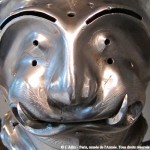 Le musée de l’Armée, l’université de Paris 3 (PRISMES – EA 4398) et l’université de Reims Champagne-Ardenne (CIRLEP – EA 4299) organisent une journée d’étude intitulée Transformer le corps masculin : armes, armures et objets personnels gravés dans l’Europe moderne. Le cœur de la journée d’étude sera l’objet en métal gravé produit en Europe du XVIe au XVIIIe siècles et à leurs décors tout en les replaçant dans leur contexte de création et d’utilisation ; de montrer la façon dont ses objets ont pu transformer le corps masculin que ce soit physiquement mais aussi symboliquement et socialement.
Informations et réservation : histoire@musee-armee.fr
. . . → En lire plus
Posté par Matthieu Lett, le 24 septembre 2015;
- Date et lieu du colloque : 5-6 novembre 2015, université de Lausanne
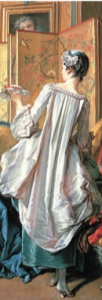 Le rococo, en dépit de la méfiance ou de l’ironie qu’il suscite, occupe une place centrale dans l’historiographie. En tant que catégorie stylistique et critique, il structure notre appréhension de l’art du XVIIIe siècle et détermine le regard que l’on porte sur celui-ci. Ce colloque, conçu en écho aux stimulantes recherches de ces vingt dernières années sur le rococo, vise à développer une réflexion épistémologique sur une notion protéiforme. Le rococo, en dépit de la méfiance ou de l’ironie qu’il suscite, occupe une place centrale dans l’historiographie. En tant que catégorie stylistique et critique, il structure notre appréhension de l’art du XVIIIe siècle et détermine le regard que l’on porte sur celui-ci. Ce colloque, conçu en écho aux stimulantes recherches de ces vingt dernières années sur le rococo, vise à développer une réflexion épistémologique sur une notion protéiforme.
La perspective privilégée pour ce colloque est celle, cri8que, de l’étude d’une no8on devenue catégorie, le rococo, appelant à réfléchir sur son apparition, sa sédimentation, sa diffusion. . . . → En lire plus
Posté par Denis Dubois, le 22 septembre 2015;
- Date et lieux des conférences : Octobre 2015-juin 2016, Paris, Hôtel de Lauzun
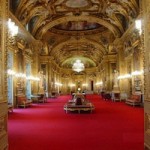 L’Institut d’études avancées de Paris organise chaque année des cycles de conférences consacrés aux sciences humaines et sociales. Animées par des spécialistes du domaine, ces conférences sont ouvertes au public et se déroulent à l’hôtel de Lauzun, Ile Saint-Louis. L’Institut d’études avancées de Paris organise chaque année des cycles de conférences consacrés aux sciences humaines et sociales. Animées par des spécialistes du domaine, ces conférences sont ouvertes au public et se déroulent à l’hôtel de Lauzun, Ile Saint-Louis.
Programme en PDF : Conférences Paris_sous_le_regne_des_bourbons
Programme 6 octobre 2015 : Montrer le roi dans la ville : les places royales parisiennes de Louis XIV à Louis XVI Alexandre Gady, Paris IV-Sorbonne
Durant les XVIIe et XVIIIe siècles, l’espace urbain parisien est caractérisé par l’inflation de l’image du souverain, principalement exprimée par le phénomène des « places royales » : dès le règne d’Henri IV se met en . . . → En lire plus
Posté par Pascale Dubus, le 21 septembre 2015;
- Date et lieu du colloque : 22-26 août 2016, Galway (Irlande), Nui Galway University
- Date limite : 28 février 2016
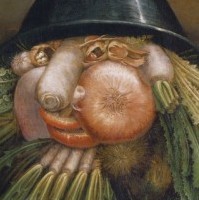 Recent studies on early modern constructions and representations of the self, the body and the human suggest a reappraisal of the notion of selfhood in terms of an unbounded – for example with respect to animals, or the in-human space of technology – and vulnerable form. As Cynthia Marshall noted: ‘Even as significant discourses were effecting the emergence of the modern autonomous self, an alternative textual tradition made available another way of thinking about subjectivity’ (The Shattering of the Self, 2002). Recent studies on early modern constructions and representations of the self, the body and the human suggest a reappraisal of the notion of selfhood in terms of an unbounded – for example with respect to animals, or the in-human space of technology – and vulnerable form. As Cynthia Marshall noted: ‘Even as significant discourses were effecting the emergence of the modern autonomous self, an alternative textual tradition made available another way of thinking about subjectivity’ (The Shattering of the Self, 2002).
Critical attention has recently been paid to the role of the early modern technological innovations in the construction of the self and, if Stephen . . . → En lire plus
Posté par basilebaudez, le 21 septembre 2015;
- Date et lieu de la journée d'étude : 10 octobre 2015, Versailles, Bibliothèque municipale
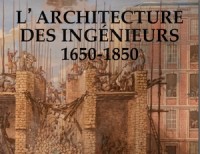 L’architecture des ingénieurs, 1650-1850 : Paris, provinces et capitales européennes L’architecture des ingénieurs, 1650-1850 : Paris, provinces et capitales européennes
Les années 1980 furent propices à l’étude du travail des ingénieurs : en 1981, Anne Blanchard publiait un Dictionnaire des ingénieurs militaires actifs en France entre 1691 et 1791, témoignant par son volume de l’importance de leur activité, tandis qu’en 1988, Antoine Picon, dans son ouvrage Architectes et ingénieurs au siècle des Lumières, accordait enfin aux ingénieurs des Ponts l’attention qu’ils méritaient et examinait leur formation et leurs méthodes de travail au regard de celles des architectes de l’Académie royale d’architecture.
Au-delà des programmes attendus, fortifications, ouvrages hydrauliques, ponts et routes, les ingénieurs, militaires et des Ponts et Chaussées, honorèrent des commandes dans le domaine de l’architecture publique . . . → En lire plus
Posté par Pascale Dubus, le 20 septembre 2015;
- Date et lieu du colloque : 1er et 2 octobre 2015, Liège, Université de Liège.
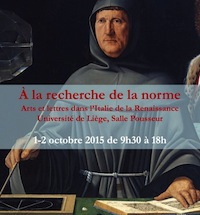 Le XVIe siècle est, pour l’Italie, une période de bouleversements politiques et religieux, mais aussi de changements artistiques et littéraires importants. À cette époque, en effet, le langage – qu’il soit littéraire, pictural, architectural ou musical – est interrogé, remis en question, refondé. Auteurs et artistes se mettent en quête de normes et de modèles qui puissent aboutir à un langage partagé. Le XVIe siècle est, pour l’Italie, une période de bouleversements politiques et religieux, mais aussi de changements artistiques et littéraires importants. À cette époque, en effet, le langage – qu’il soit littéraire, pictural, architectural ou musical – est interrogé, remis en question, refondé. Auteurs et artistes se mettent en quête de normes et de modèles qui puissent aboutir à un langage partagé.
Si c’est au Cinquecento que la « question de la langue » s’impose en Italie comme une interrogation fondamentale et fait alors l’objet de nombreuses discussions dans les milieux lettrés, dans les arts visuels, ce furent des artistes exceptionnels tels que Raphaël et Michel-Ange qui, les premiers, ouvrirent la voie . . . → En lire plus
Posté par Denis Dubois, le 19 septembre 2015;
- Date limite : 30 octobre 2015
- Date et lieu des rencontres : 26-27 janvier 2016, Liège, Université de Liège
 Troisièmes rencontres doctorales autour du Moyen Âge et de la première Modernité (XIVe–XVIIe siècles) : « Documents, méthodes et concepts » (26-27 janvier 2016) Troisièmes rencontres doctorales autour du Moyen Âge et de la première Modernité (XIVe–XVIIe siècles) : « Documents, méthodes et concepts » (26-27 janvier 2016)
Depuis le Moyen Âge jusqu’aux bouleversements engendrés par la science galiléenne, l’Europe vit d’incessants questionnements qui remettent en cause ses équilibres politiques et leurs légitimations, qui ébranlent les fondements de l’unité confessionnelle et déplacent les limites du savoir et de la création. En tentant de transcender les clivages hérités d’une longue tradition historiographique, le Département de recherche (DR) Transitions (http://web.philo.ulg.ac.be/transitions/fr) se penche sur ces incessantes mutations. Ouvert aux médiévistes et aux modernistes, il encourage la confrontation des pratiques de recherche, les collaborations inédites . . . → En lire plus
Posté par Denis Dubois, le 16 septembre 2015;
- Date de prise de fonction : Août 2016
- Date limite : 12 octobre 2015
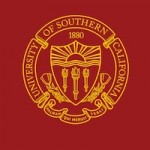 The Department of Art History in the Dana and David Dornsife College of Letters, Arts and Sciences at the University of Southern California (Los Angeles, CA) invites applications for a tenure-track Assistant Professor position in the history of art (including but not limited to visual and/or material culture) of the early modern period (ca. 1500-1800). This position is expected to begin August 2016. The area of expertise is open, and various methodological and theoretical approaches are welcome. The Department of Art History in the Dana and David Dornsife College of Letters, Arts and Sciences at the University of Southern California (Los Angeles, CA) invites applications for a tenure-track Assistant Professor position in the history of art (including but not limited to visual and/or material culture) of the early modern period (ca. 1500-1800). This position is expected to begin August 2016. The area of expertise is open, and various methodological and theoretical approaches are welcome.
The successful candidate will teach courses at the undergraduate and graduate level and participate actively in the intellectual life of the department and the university. Candidates must possess a Ph.D. at the time . . . → En lire plus
Posté par Sébastien Bontemps, le 14 septembre 2015;
- Date limite : 25 septembre 2015
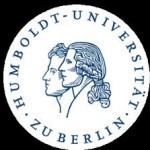 Professorship in Modern Art History, HU Berlin Institut für Kunst- und Bildgeschichte, Humboldt-Universität zu Berlin Professorship in Modern Art History, HU Berlin Institut für Kunst- und Bildgeschichte, Humboldt-Universität zu Berlin
Application deadline: Sep 25, 2015
The Faculty of Humanities and Social Sciences at Humboldt University of Berlin, Department of Art and Visual History, invites applications for a Full Professorship in Modern Art History (W3) beginning April 1, 2016. The appointed professor should be a nationally and internationally recognized modern art historian with a broad knowledge of the major tenets and ideas that shaped the discipline of art history during the 19th and 20th centuries. A research focus in the history and theory of images and in gender studies is desired. The candidate should have experience with interdisciplinary projects and be willing to collaborate with faculty . . . → En lire plus
|
Équipe Rédacteur en chef : Olivier Bonfait.
Rédacteurs : Elliot Adam (Moyen Age) ; Nicolas Ballet (XX-XXIe siècles) ; Matthieu Fantoni (musées) ; Antonella Fenech Kroke (bourses) ; Vladimir Nestorov (Lettre mensuelle)
Administrateur web : Matthieu Lett.
ancien éditeur : Pascale Dubus
anciens rédacteurs : Gautier Anceau, Sébastien Bontemps, Damien Bril ; Sébastien Chauffour ; Ludovic Jouvet ; Aude Prigot
|
 The John Carter Brown Library (JCB), an independently funded institution for advanced research on the campus of Brown University, will award approximately forty residential fellowships for the year July 1, 2016 to June 30, 2017. The Library contains one of the world’s premier collections of primary materials related to the discovery, exploration, and settlement of the New World to 1825, including books, maps, newspapers, and other printed objects. JCB Fellowships are open to scholars and writers working on all aspects of the Americas in the early modern period.
The John Carter Brown Library (JCB), an independently funded institution for advanced research on the campus of Brown University, will award approximately forty residential fellowships for the year July 1, 2016 to June 30, 2017. The Library contains one of the world’s premier collections of primary materials related to the discovery, exploration, and settlement of the New World to 1825, including books, maps, newspapers, and other printed objects. JCB Fellowships are open to scholars and writers working on all aspects of the Americas in the early modern period.


















